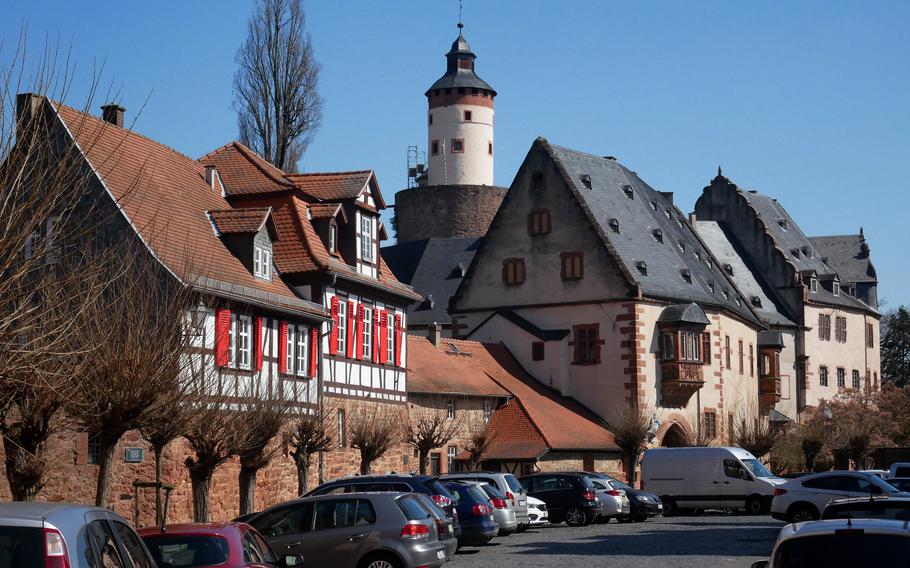
A view of half-timbered houses, left, and the castle of the princes of Ysenburg-Buedingen in Buedingen, Germany. It has been in family hands for more than 20 generations. (Michael Abrams/Stars and Stripes)
Buedingen is one of those classic German towns that conjure up the stuff of fairy tales or Disney movies: half-timbered houses, cobblestoned lanes, defensive walls with towers and a castle.
If it weren’t for the modern traffic, you might think you were back in the Middle Ages. On a cool but sunny spring day, I took a trip to the medieval town, which was once also home to the U.S. Army.
Much of the town’s history is intricately connected to the earls and princes of Ysenburg-Buedingen. It was they who had the mighty defensive walls built and they who lived in the impressive castle, from where they ruled the surrounding lands.
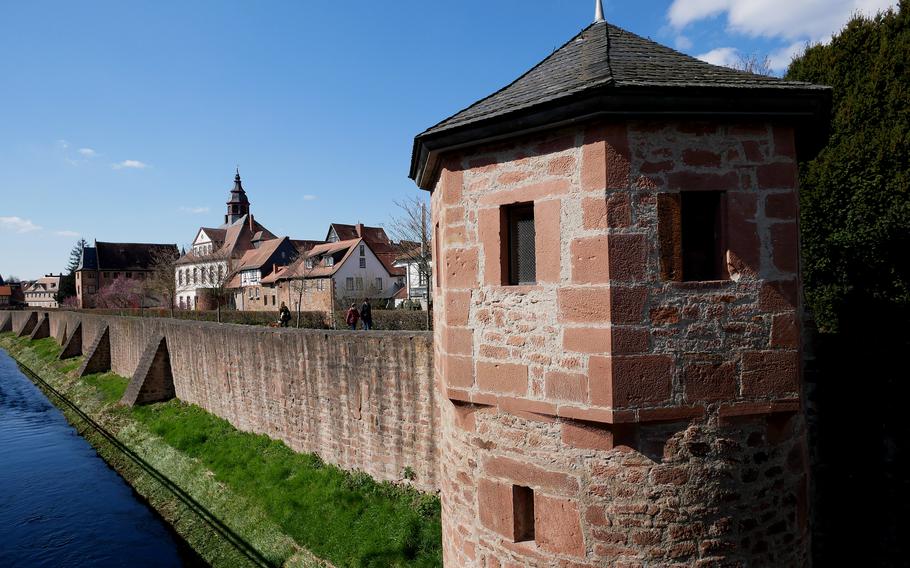
The old ramparts surrounding Buedingen, Germany’s old town quarter, with the Seemenbach stream at left. You can stroll atop it, or walk along a nice green stretch between the walls and the city. (Michael Abrams/Stars and Stripes)
I crossed the Seemenbach, the stream that runs along one section of the town walls, on a covered pedestrian bridge, walked atop the ramparts, then disappeared into the maze of the old town.
Buedingen’s historic district isn’t that big, so it is fun to just stroll along the sometimes very narrow cobblestone streets and see the sights.
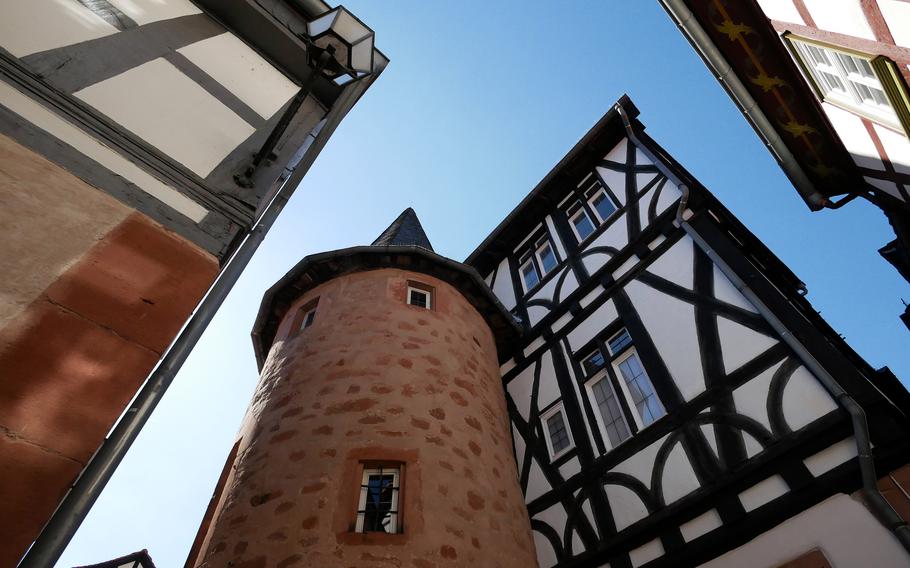
A view looking up at the half-timbered and stone buildings in Buedingen, Germany’s old town quarter. The charming town, east of Frankfurt, was once home to the U.S. Army. (Michael Abrams/Stars and Stripes)
The oldest part of town dates to the mid-14th century, when the first defensive walls were built. The historic town hall, built in 1458, is the center of the Altstadt, or old town.
It’s worth checking out the imposing half-timbered and stone houses around here and the 15th-century church.
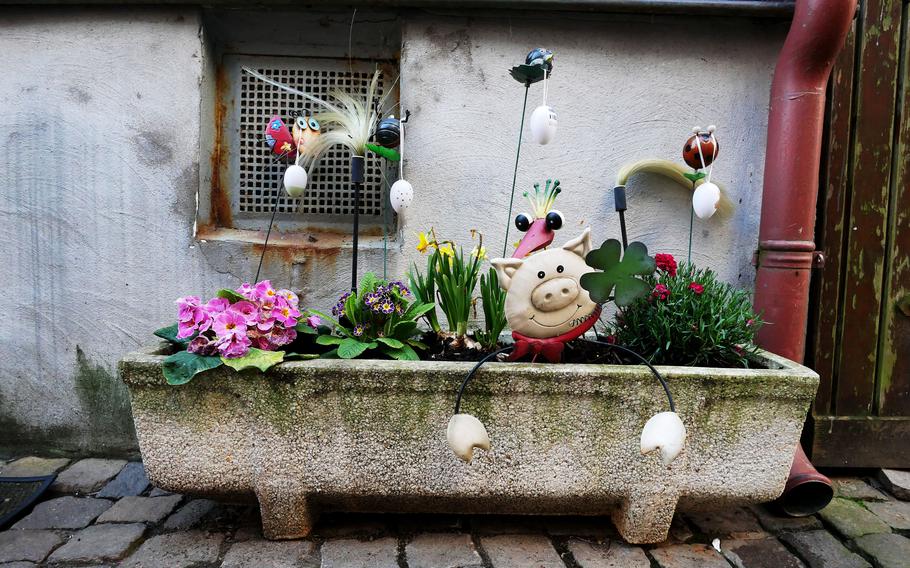
The narrow lanes of Buedingen, Germany’s old town quarter are often colorfully decorated. (Michael Abrams/Stars and Stripes)
There is also the Neustadt, or new town, in Buedingen, but that is a misnomer now. The Neustadt was established at the end of the 14th century to accommodate new residents. The town walls were extended to surround it, too.
Buedingen has seen its share of wars and calamities over the centuries, although luckily it escaped destruction during World War II.
During the 17th century’s Thirty Years War, both sides occupied the town. The bubonic plague made more than one visit during that century, and witch hunts were common too, with more than 150 townsfolk put to death.
If you leave the old town via the imposing early-16th century Jerusalem Gate, you can see the other side of the coin, however.
Here is the Vorstadt, created after an edict of tolerance issued in 1712 by Prince Ernst Casimir I permitting religious dissenters to live in Buedingen. The Vorstadt became a suburb for the new settlers.
Back inside the walls I strolled to the Marktplatz, lined with half-timbered houses, where a farmers market is held on Fridays.
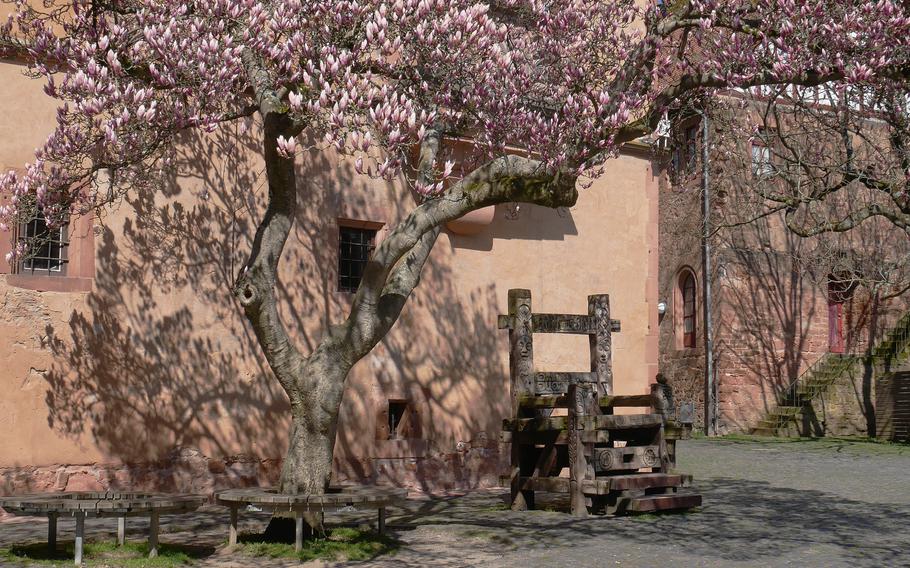
The quirky Rathausstuhl, or Town Hall Chair, in Buedingen, Germany is a giant wooden chair adorned with intricate carvings. Big enough for two people to sit on, it isn’t near Buedingen’s town hall, but in the Oberhof, a 16th century courtyard surrounded by historic buildings. (Michael Abrams/Stars and Stripes)
Walking through the Neustadt, I came to the Oberhof, a 16th-century courtyard surrounded by historic buildings, and the quirky Rathausstuhl, or town hall chair, a giant wooden seat adorned with intricate carvings that is big enough for two people.
A walk along the Oberhofdamm affords an excellent view of the castle and its tall tower.
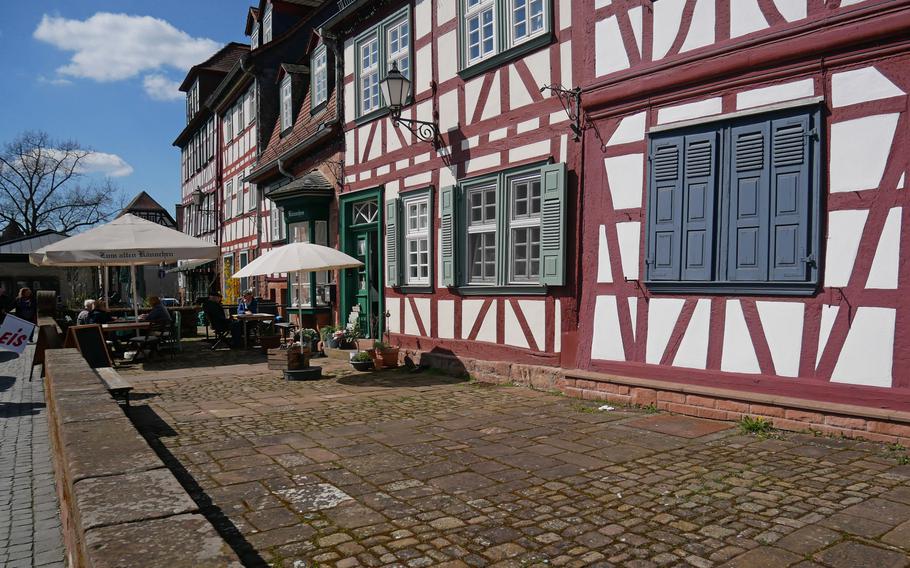
People enjoy refreshments at a cafe among the half-timbered houses that line Buedingen, Germany’s marketplace. (Michael Abrams/Stars and Stripes)
A cafe and a hotel are located in the outer courtyard, but the castle is usually closed to the public. It has been in Ysenburg-Buedingen family hands for more than 20 generations.
I spent a little more time walking along the walls until I came to a mighty old guard tower and imposing stone house, with a bridge over the Seemenbach, a popular photo motif.
Near here is the tiny Butcher Museum. Open on weekends, it features two rooms displaying what a butcher’s shop once looked like and the tools used in the job.
Returning to the 21st century, I retrieved my car and drove past what American service members and their families had called home over a span of more than 60 years.
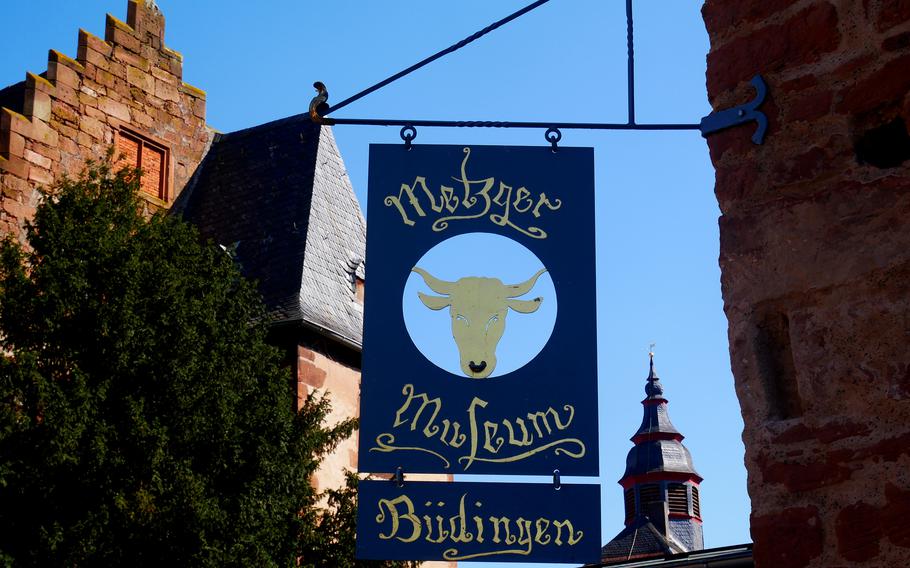
A sign announcing the Butcher Museum in Buedingen, Germany’s old town quarter. The museum is actually around the corner from here. Open on weekends, it features two rooms of what a butcher’s shop once looked like and the tools they once used. (Michael Abrams/Stars and Stripes)
U.S. Army units, mostly cavalry, were stationed here from the end of World War II until 2007. Today, you can still see some renovated family housing, and the heart of Armstrong Barracks still stands, being used as a refugee reception facility.
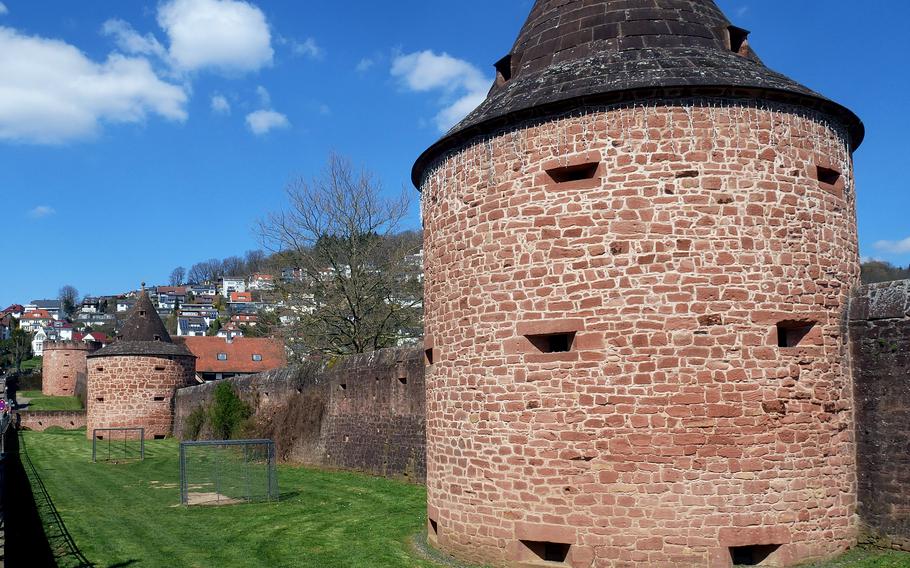
The old Buedingen, Germany, city walls with its defensive towers. The town, east of Frankfurt, was once home to U.S. Army cavalry units. (Michael Abrams/Stars and Stripes)
On the QT
Directions: Buedingen is about 54 miles from Wiesbaden via Autobahn A3, highway B43a and A66. From Kaiserslautern, it is about 100 miles via A63, A60, A3, B43a and A66.
Times: Any time, but best when the weather is nice.
Costs: There is some free parking outside the old town. The spacious Altstadt parking lot inside the town walls costs five euros for five hours, except Fridays where there is a two-hour limit, because of the farmers market.
Food: There are restaurants spread throughout the town.
Information: Online: buedingen.info; the tourist information office is at Marktplatz 9. Two other places to visit nearby are Gelnhausen and Ronneburg Castle.